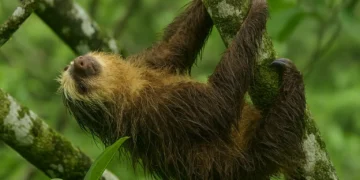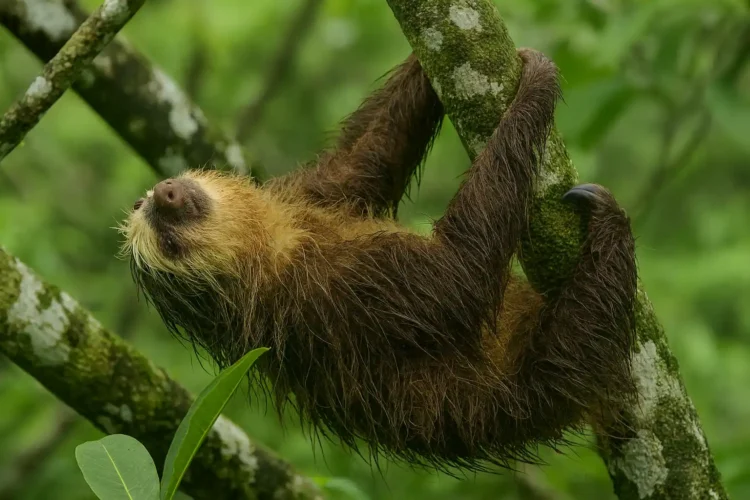Corcovado National Park, the last true jungle on the planet: the complete guide 2025
If you are looking for a corner of the world where nature still reigns supreme, Corcovado National Park is the place for you. We are in the heart of the Península de Osa, Costa Rica’s most remote and wildest region. Here you will find 2.5 percent of the world’s biodiversity enclosed in just over 42,000 hectares-an incredible density of life for a single national park. Corcovado is one of the purest and most intense nature experiences you can have in Costa Rica, so our advice is not to discard this destination.
Primary forests, rivers, swamps, virgin beaches, and a myriad of free-living animals: tapirs, jaguars, howler monkeys, toucans, snakes, and caimans are just a few of the stars of this adventure. On our trip to the Osa Peninsula we reached La Sirena Ranger Station, the most iconic and accessible in the park, and were left speechless. You’d think that most travelers would tend to set aside a stop at Corcovado, but in many ways this “handkerchief” of land is far more impressive than Manuel Antonio National Park (which is still fantastic).
Things to know before entering Corcovado
Corcovado National Park is not a place you visit at the last minute. Access is allowed only with a certified guide, and places are limited to preserve its fragile ecosystem. Day tours generally leave at dawn (between 5:30 and 6:00 a.m.) and must be booked well in advance-if you want to take in the beauty of this park, you’ll have to get up early, just know that.
La Sirena Station is the most popular access point, easily reached from Bahía Drake, Uvita or Sierpe. The classic hike involves a hike of about 5 to 6 hours in the jungle, but it is also possible to sleep inside the park for an even more authentic experience with the sounds of nature at night to keep you company.
Corcovado National Park schedules and prices.
San Pedrillo sector: same-day visits from 07:00 to 13:30.
La Leona sector: same-day visits from 08:00 to 14:30.
Siren Sector: open daily for overnight and day tours; in October this sector may close to visitors (check with the office before booking).
Patos sector: same-day visits from 07:00 to 14:00.
El Tigre Sector: 07:00 a.m. to 4:00 p.m. Contacts: Asociación Dos Brazos de Río Tigre: +506 8691 4545 / +506 8988 1885 corcovadoeltigre@gmail.com, https://www.corcovadoeltigre.com/.
Entrance fees – Corcovado National Park
- Nonresident aliens: US$ 16.95.
- Camping area (San Pedrillo Station): US$ 4.52 (you will need to bring your own tent)
- Non-resident children (2-12 years old): US$ 5.65.
Notes: free admission for children under 2 and domestic visitors/residents aged ≥65 years.
Services in the Sector Sirena
Lodging, meals, nature store and locker rental available. Daily rates (for domestic and foreign):
- Accommodation: US$ 30
- Breakfast: US$ 20
- Lunch: US$ 25
- Dinner: US$ 25
- Locker rental: US$ 4
For updated details: https://adicorcovado.org/hospedaje-y-alimentacion/
Tickets must be booked in advance through local tour operators or through the official SINAC platform:
https://serviciosenlinea.sinac.go.cr
Rates may change: always check when booking.
Corcovado National Park Regulations
As in gra part of Costa Rica’s other National Parks, Corcovado ‘s regulations are very strict, precisely to protect one of the last primary ecosystems on Earth.
What is allowed to do:
- Bring a reusable water bottle
- Use biodegradable repellents and sunscreens
- Wear technical clothing and hiking shoes or rubber boots
- Overnight stay at the Siren Ranger Station (reservation required)
What is not allowed:
- Bringing food inside
- Using drones
- Making noise or listening to music
- Leaving the group or deviating from the official paths
- Smoking or lighting fires
- Using photographic flashes
- Introducing pets
How to get to Corcovado National Park
By boat from Bahía Drake
The most common way to reach La Sirena Station is by boat. Departures are early in the morning and the journey takes about 1 hour. The navigation is not always smooth, especially in the wet season, but the experience is breathtaking: you may spot dolphins, sea turtles or even humpback whales along the way.
In 4×4 + trekking
Alternatively, you can reach the park by land from Puerto Jiménez to Carate, and then walk about 20 km (nice walk, yes) to La Sirena. This option is perfect for the more adventurous and also allows you to discover the La Leona sector. If you decide to arrive on your own, we recommend renting a 4×4 car as we did.
What will you see at Corcovado National Park?

More species are concentrated in Corcovado than in any other park in Costa Rica. It is not uncommon to spot:
Fauna:
- Baird’s Tapirs
- Howler, capuchin, squirrel and spider monkeys
- Sloths (both two-toed and three-toed)
- Toucans, scarlet macaws, guacamayos
- Caimans and crocodiles
- Snakes, even venomous ones
- Ocelots, jaguars (very rare)
- Sheep, armadillos, anteaters
Flora:
- Primary forest with tall trees
- Wild orchids
- Palms, ferns and lianas
- Mangroves and wetlands
Where to sleep in Corcovado National Park?
Those who want to totally immerse themselves in this adventure can stay overnight at La Sirena Station. Accommodations are very basic (dormitory style) and should be booked well in advance. Going out at dawn with your guide and having the trails pretty much to yourself is a truly unmissable experience, so we recommend spending at least one night inside the park.
- Beds available: maximum 70
- Facilities: shared bathrooms, showers, breakfast and dinner included
- Approximate cost: about 30-40 USD for overnight stay, excluding meals
Where to eat in Corcovado National Park?
No food can be brought in, but breakfast and dinner are served inside the Siren Ranger Station for those staying overnight, while those visiting the park during the day can enjoy snacks and drinks, which can be purchased directly in the small food court in the visitor center.
The trails of Corcovado National Park
The park is crisscrossed by more than 100 km of trails, many of which are accessible only with a guide.
Main routes:
- Sirena Trail: the most traveled loop trail in day tours
- Sendero Espaveles: perfect area for sloth and monkey sightings
- Sirena-La Leona Trail: a challenging trail, suitable for those who want to have a complete experience (20 km one way)
- Sirena-Los Patos Trail: runs through a more inland part of the park, less traveled and with lush vegetation
Guided tours to Corcovado National Park
Each tour must be accompanied by a certified guide. The most popular tours are:
- Day tour from Bahía Drake (about 6 hours): 95-120 USD
- 2-day trek with overnight stay: 250-350 USD
- Combination tours with Isla del Caño (snorkeling + forest): available with some local operators
Tours can cost a little more and we generally tend to arrange everything ourselves, but in the case of Corcovado it turns out to be almost necessary. The best guides are experienced naturalists with hawk-like eyesight-they can spot invisible animals even from a few meters away.
Conclusion: our experience at Corcovado National Park
Visiting Corcovado National Park was, without exaggeration, one of the most intense and surprising moments of our trip to Costa Rica. We walked among towering trees, forded rivers with water at our knees, and observed a herd of capuchin monkeys vying for food under the watchful eyes of a toucan. Far from any signal, wi-fi or convenience, we came face to face with nature in its purest form. If you are looking for an authentic, powerful and out-of-the-ordinary experience, you cannot miss Corcovado. Be prepared though, a minimum of physical endurance will be required.






